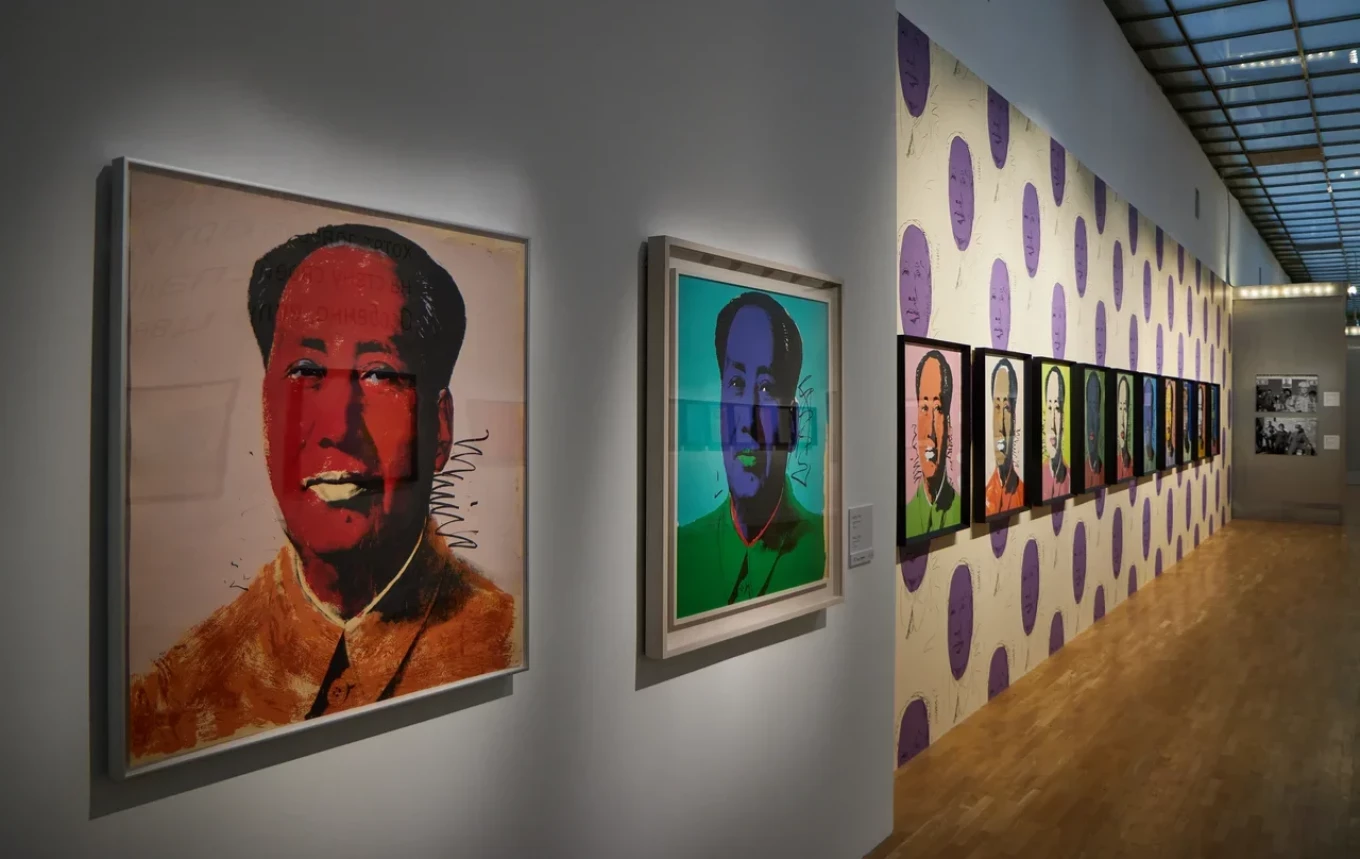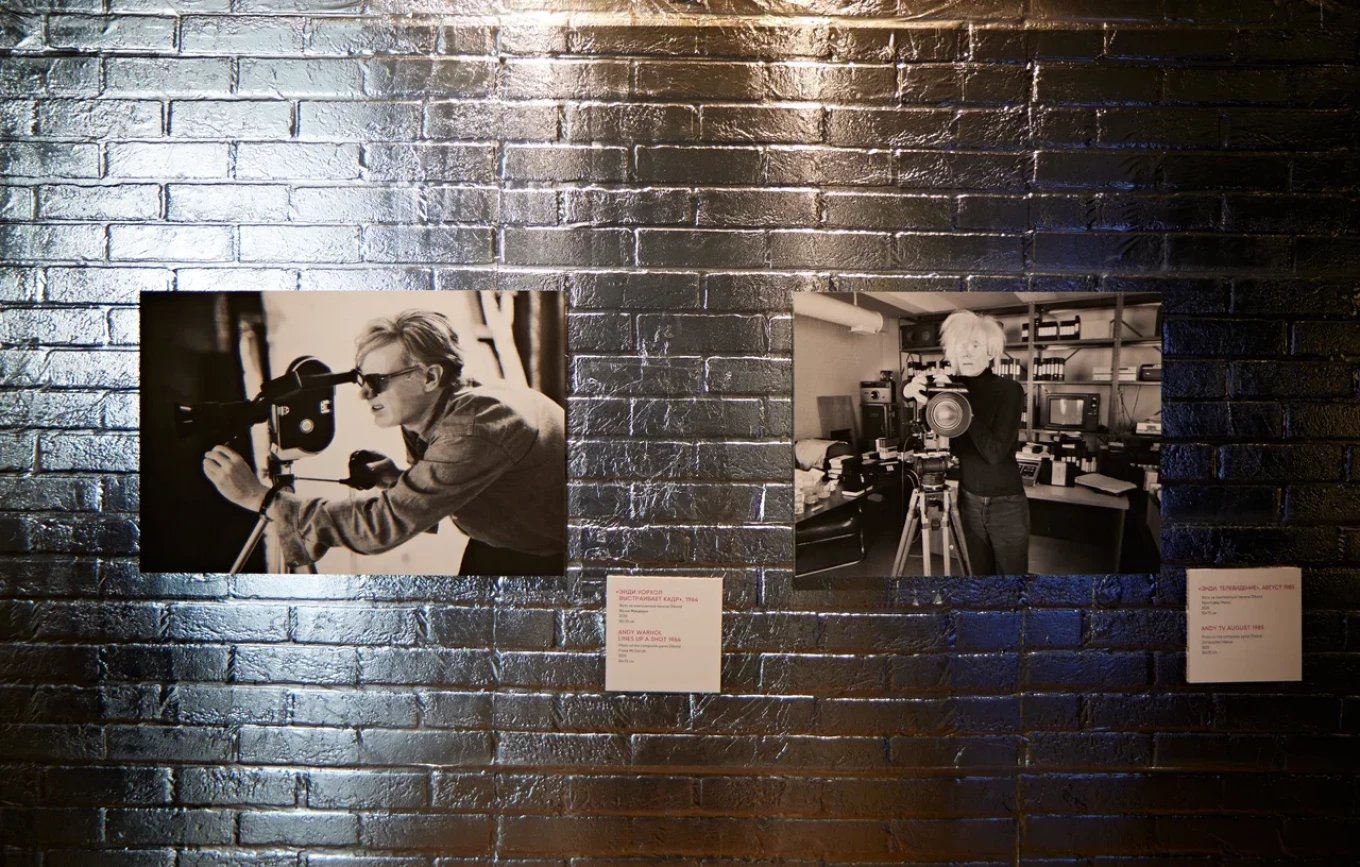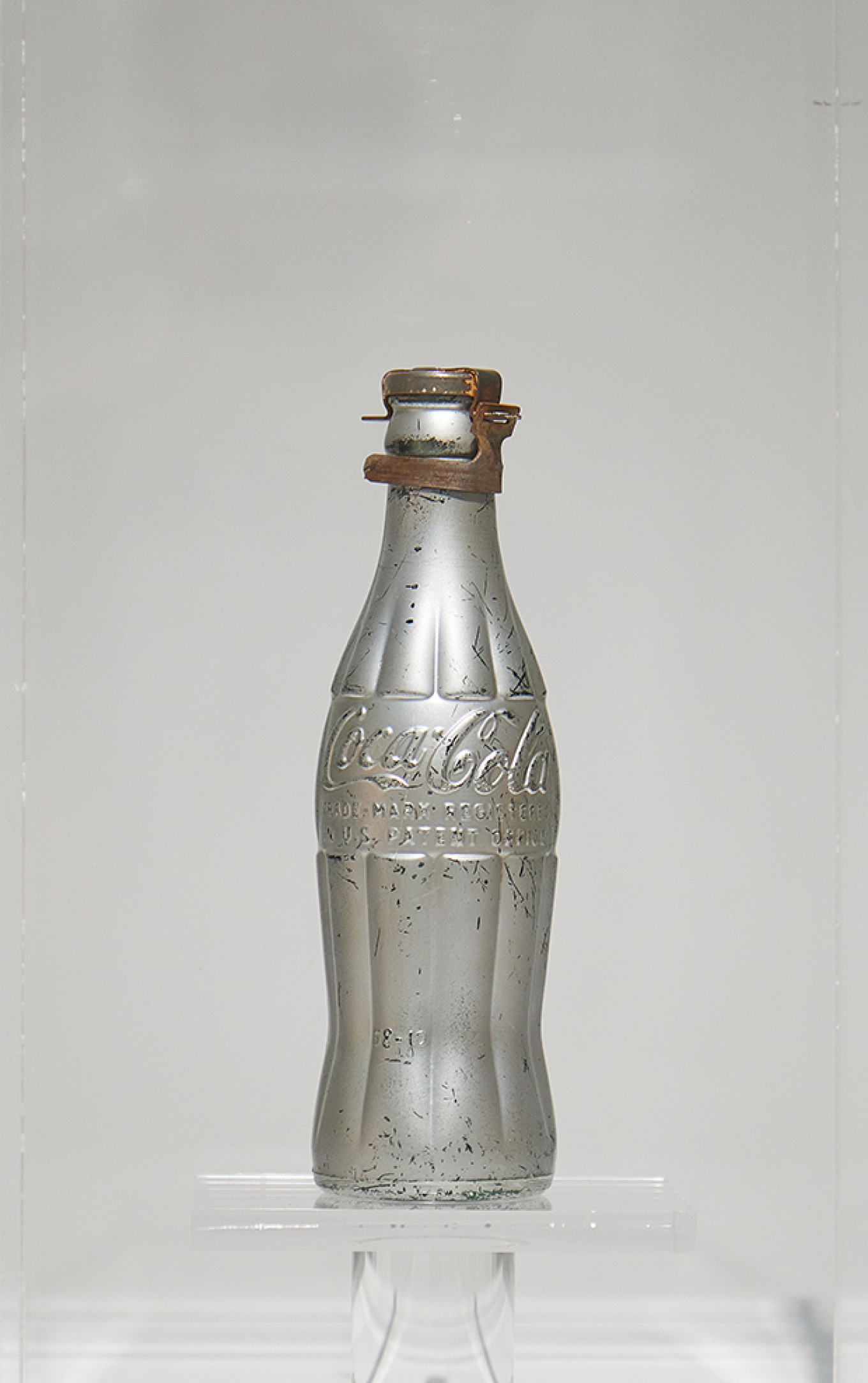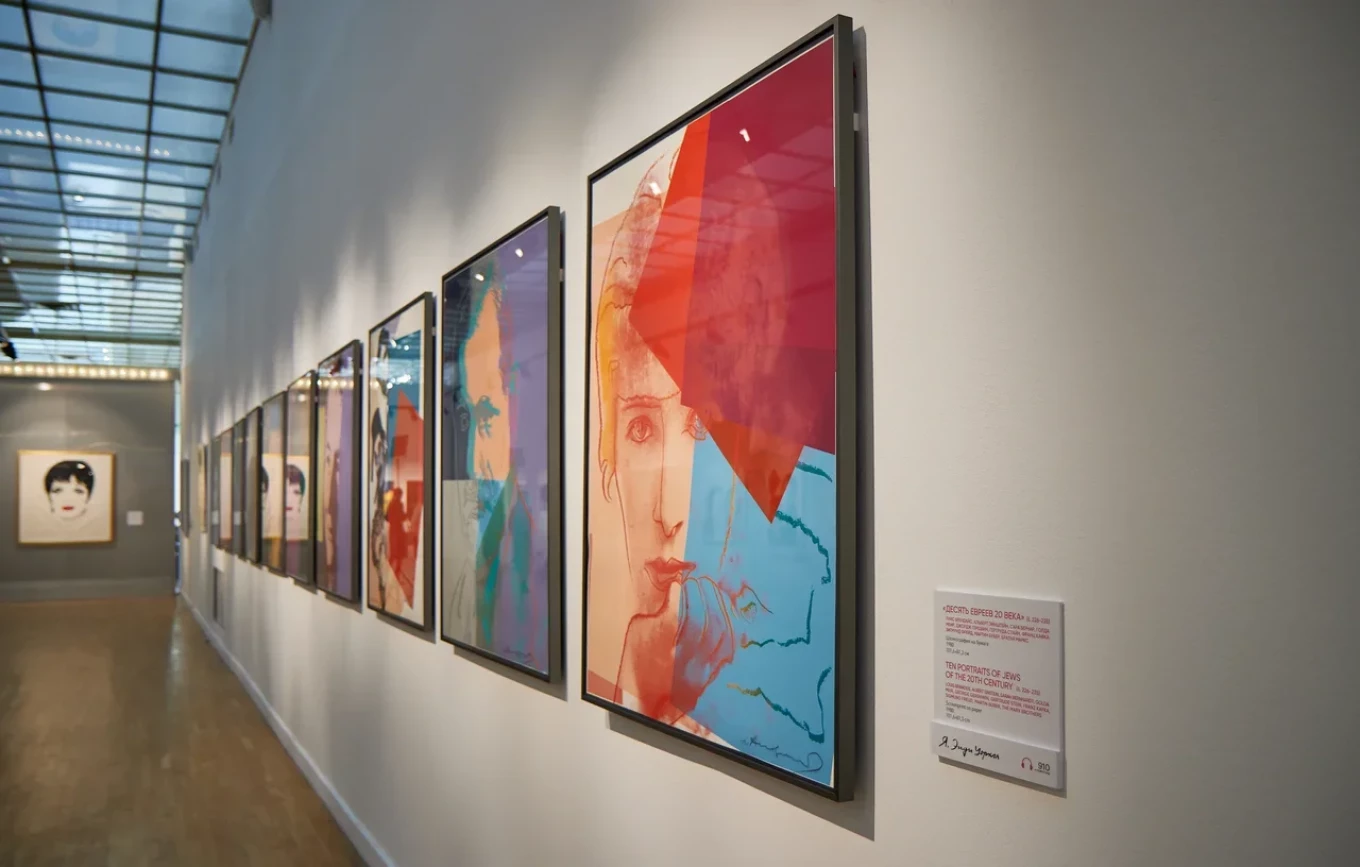In 2020 and 2021, Moscow held its first truly comprehensive exhibition of works by Andy Warhol, the king of American pop-art. Paradoxically, the most comprehensive exhibition of the most famous 20th century, tradition-challenging American artist was held in Moscow at the time of the greatest decline in Russian-American relations.
The exhibition, entitled “I, Andy Warhol” was held in the hall of the Union of Artists, now part of the New Tretyakov Gallery. It was disrupted for many months of quarantine but extended its run into February.
And despite the coronavirus, the disruptions, and outright hostile relations between Russia and the U.S., the show set new attendance records and was, in the end, one of the main events of artistic life in the capital. The exhibition displayed more than 200 works and introduced the artist to Russians as a master of color and portraiture.
Like all great shows, it began with a bit of a scandal.
Soon after it opened several art critics doubted the authenticity of some of the works on display. Many works did not include information on where they were held or which collection they came from. The organizers pointed out that the vast numbers of prints of Warhol’s works made a discussion of the works’ authenticity pointless.

So Warhol, even a half a century after his death, continued to break with conventions and violate the norms of traditionally identified art that museum-goers are used to seeing in the halls of the Tretyakov Gallery. But judging by the visitors, this didn’t cause discomfort or hamper admiration of Warhol’s favorite characters: Mao, Lenin, Marilyn Monroe, elephants, chimpanzees, pandas and rhinos.
A smaller scandal broke out in the right-wing press. The newspaper Zavtra, which has a nationalist-imperialist ideology, pointed out the offense of Warhol putting Lenin and Mao with Mickey Mouse, Uncle Sam and Santa Claus. The paper also noted Warhol’s Slavic roots. “Warhol is eclectic and not very original,” the article stated. Staying true to the paper’s ideology, it continued: “If you didn’t know the works were done by Warhol with his image, ideas, and antics, they would just be colored nothingness.”
Getting to know the art
The show, curated by Gianni Mercurio, was brilliantly organized to help visitors appreciate Warhol’s art and take home some memories. A terrific website lets viewers take a virtual tour of the exhibition, and the shop sold an excellent catalog, as well as all kinds of souvenirs, like t-shirts and magnets featuring Warhol’s works.
This is the first time that enough of Warhol’s works have been displayed for Russian art lovers to appreciate the depth of his ideas. Warhol was revealed as a great artist — a versatile master of portraiture and color with a keen eye for form. Especially impressive were the portraits of ten Jewish people renowned in the 20th century that were done in silk screen on paper. Not all of them were immediately recognizable, but the images of Golda Meier and Franz Kafka certainly were. It was also delightful to see an elegant portrait of the young Queen Margrethe II of Denmark with orange hair and dark blue eyelids.

The show included the famous canvas of “Marilyn” with variously colored lips, eyebrows, shadows and hair. This was the prime selfie place for endless numbers of young Russian male and female Warhol fans. If the neon magnetism of “Marilyn” near the entrance was truly hypnotic, the larger version in the main hall was spectacular: flamboyant, vibrantly colored, pulsing with vitality. The work was saturated with halftones, the kind we are used to seeing in works by impressionists. After this show even the most conservative Russian art critics and artists must admit that Warhol know what he was doing with color.
Getting to know the artist
Warhol’s biography was illustrated against the backdrop of the 20th century — especially cinema made around the world — and U.S.-Soviet relations, which helped visitors get a better understanding of the artist. He is certainly not a “fake artist” or “art charlatan,” as the leading lights of socialist realism liked to call him.
Warhol was born in 1928 in Pittsburgh in a family of Greek-Catholic Lemkos from Slovakia. His mother (nee Zavatskaya) never learned to speak English. “Often ill and uncommunicative in childhood, Andy Warhol spend much of his time at home, listening to the radio and making collages out of magazine cutouts that he drew on and colored,” one of the first informational stands tells visitors. The new technology of the 20th century, particularly the rapid advancement of photography, led to the young Warhol to conceive of other visual possibilities. In 1937 he was given a film camera and fell in love with photography. In the 1950s Warhol’s switched to the Polaroid, which could instantly capture images and life in photographs. One can only imagine what he would have done with today’s digital technology.

In 1945, when WWII ended and the UN was founded, Warhol began to study in the graphic design department of the Carnegie Institute of Technology. American universalism and standardization inspired him to celebrate cans of soup and Coca Cola. Warhol believed that Coca Cola brought everyone in American society to the same level: “…you know that the President drinks Coca Cola, Liz Taylor drinks Coca Cola, and just think, you can drink Coca Cola, too. A coke is a coke and no amount of money can get you a better coke than the one the bum on the corner is drinking. All the cokes are the same and all the cokes are good. Liz Taylor knows it, the President knows it, the bum knows it, and you know it.” In the Soviet Union, this would been called “leveling,” but now it might be called — with a grimace — globalization.

In 1963 Warhol bought a building in Manhattan that came to be called the Factory, where he made his art-like objects on an assembly line. In 1964 he had his first show, an exhibition of about one hundred versions of Brillo boxes and bottles of Heinz Ketchup.
Clothing and footwear were important elements in 20th century consumer society, and the exhibition displays Andy Warhol’s drawings for women’s journals, especially Harper’s Bazaar, of women’s corsets, underclothes and shoes. There is a particularly fine example of his “Diamond Dust Shoes,” made of silkscreen ink and diamond dust on canvas, lent to the show from a private collection in Milan.

A parting gift
Moved by the tales of the American rock musician Joanne Stingray who spent time in the Soviet Union in the perestroika era, Warhol sent gifts to Leningrad artists and rock musicians: Sergei Kuryokhin, Timur Novikov, Viktor Tsoi, Sergei Bugayev Afrika, Georgy Guryanov, Oleg Kotelnikov and Boris Grebenshchikov.
In January 1986, about a year before his death, the first show of works by Andy Warhol was held in the U.S.S.R. It was held in the ASSA Gallery and consisted of a display of those gifts. The St. Petersburg artists gave Warhol the academic title of Doctor of All Kinds of Arts, as testified by the certificate displayed at the exhibition.
Warhol’s guiding credo is the last things visitors see as they leave the exhibition: “The idea is not to live forever, but to create something that will.”
The show closes Feb. 14. See the exhibition online here.





